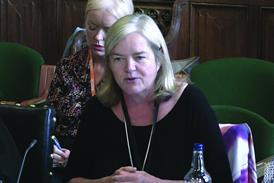The most interesting parts of Cabinet Office minister Francis Maude’s ‘Civil Service Reform Plan’ do not occupy much space in the 30-page document released this week.
Controversial proposals on ‘managing poor performance’ are tucked away at the back, on the page before ‘delivering an Olympic legacy for the civil service’. (Both get equal attention in the text.) Government lawyers do not get a direct name-check, but the government’s in-house legal departments will be affected by proposals to ‘manage poor performance’.
The government legal departments have already seen huge change - and huge cuts. They have embraced the ‘shared services’ model, with many legal departments advising more than one department.
Across the board they were early to absorb cuts. And remaining government lawyers dealt with the increased workload that came from unraveling projects such as ‘Building schools for the future’.
The Treasury Solicitor's Department and its sister departments are used to change, and in recent years the Treasury solicitor has done much to bring the rewarding instructions in-house, and to improve government lawyers’ professionalism in difficult times.
But lawyers who have worked with performance management programmes will likely be suspicious of this one. It looks like in practice it will be based on a ‘bell curve’.
Poor performance is always relative - even if all your colleagues are brilliant, a performance management programme of this sort commonly creates pressure to identify, as suggested in government briefing to the press, a bottom 10%.
In this scenario, heads of legal in both private and public sector organisations relate, departments are never allowed to arrive at a position of across-the-board excellence. The entire premise is that they are a bit rubbish.
Meanwhile, other departments in the organisation are reluctant to allow that colleagues in another department might be closer to excellent than they are. If one department is identifying 10% of staff as total losers, others are not seen as playing ball if they have not identified 10%.
There is an exceptional amount of office and organisational politics all around the use of a bell curve. I pick on it here because, in private discussions, it is the model that senior in-house lawyers whom I respect have consistently been rudest about.
Following on from all they have done in recent years, there are plenty of excellent government lawyers who can be forgiven for seeing the ‘Civil Service Reform Plan’ as one reason to exit public service altogether.
At which point, members of the ‘bottom 10%’ move a little closer to the top of the pile - which is probably not what the report’s author had in mind.
Eduardo Reyes is Gazette features editor
 Follow Eduardo on Twitter
Follow Eduardo on Twitter



























No comments yet